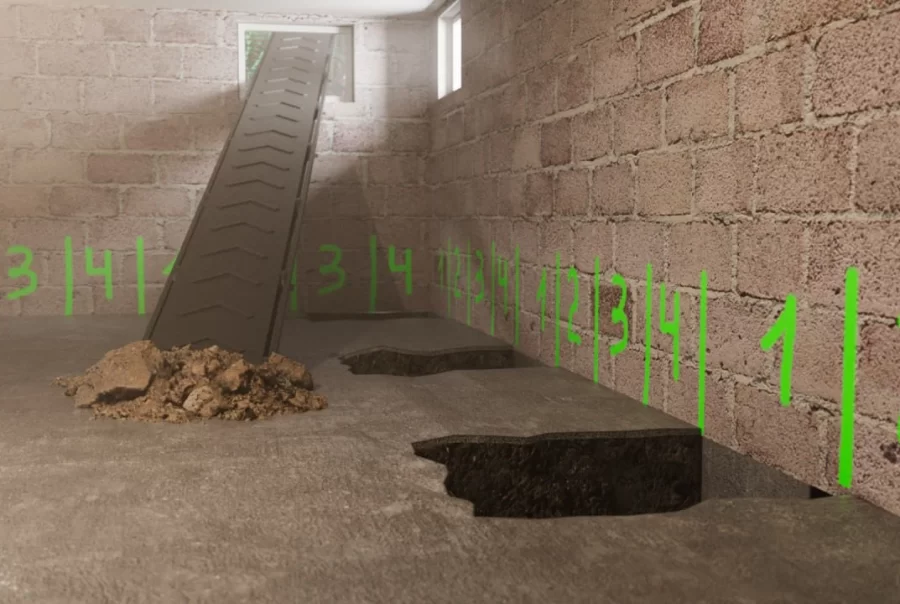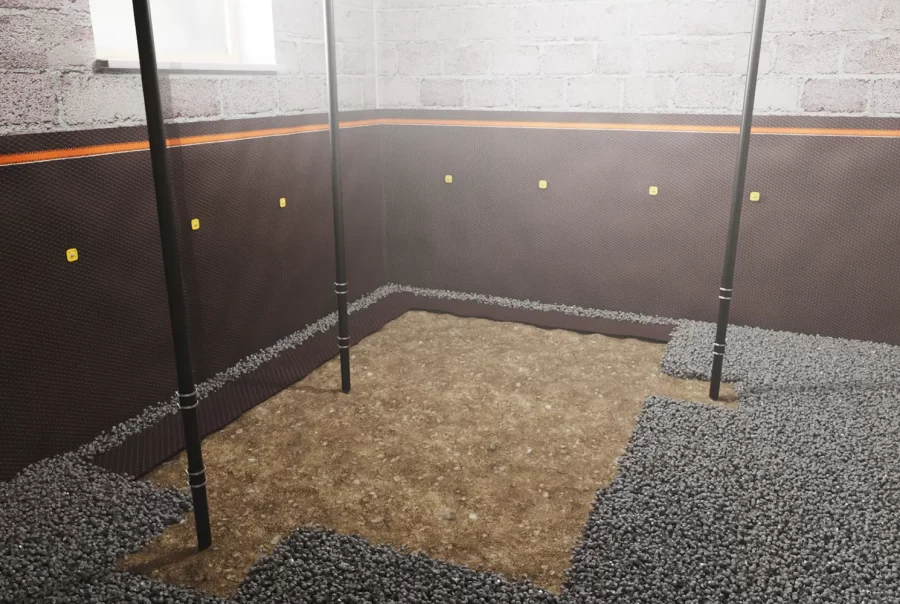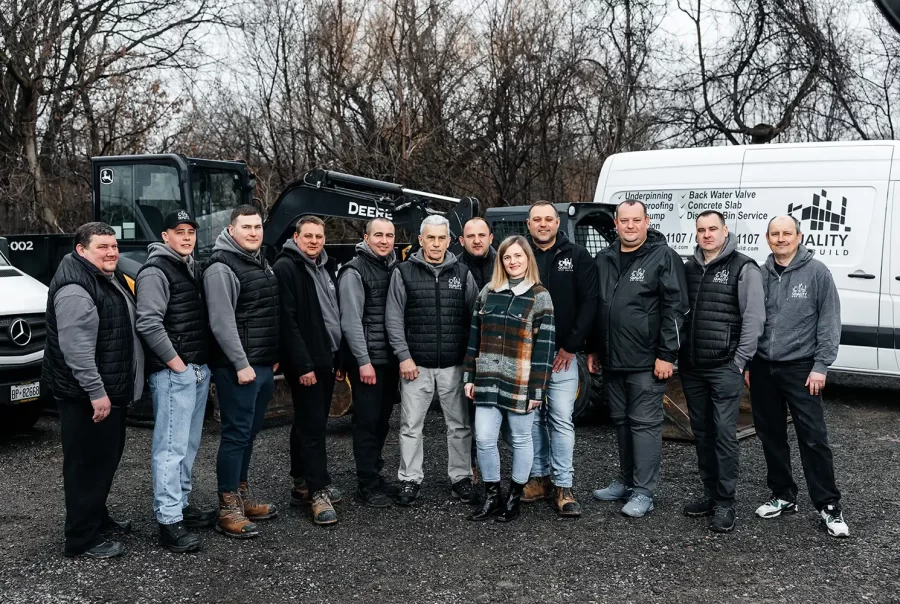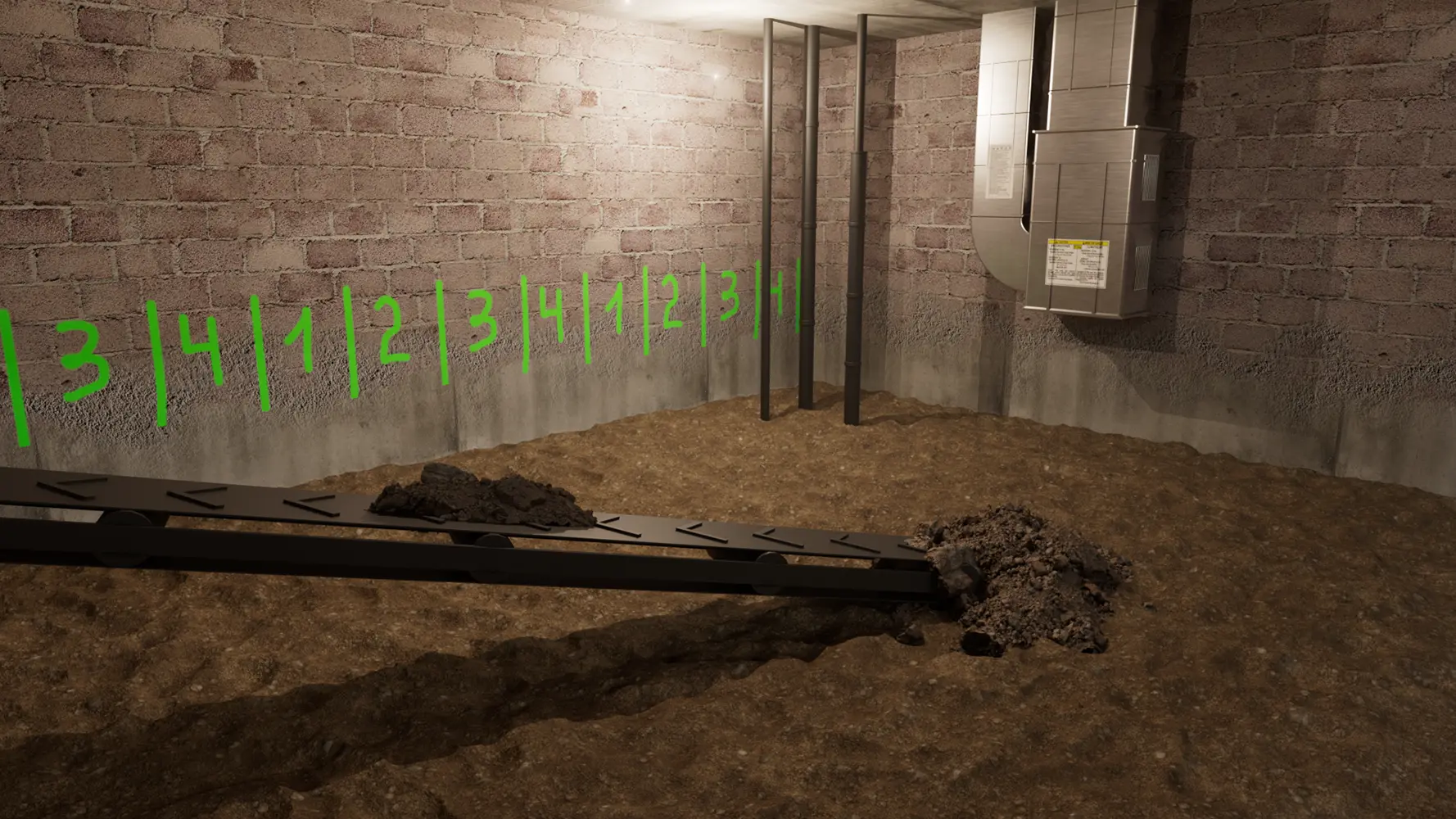In modern construction, there are dozens of factors that can affect the durability and safety of a building. One of the key processes that ensures reliability and stability of structures is foundation strengthening.
When we talk about underpinning — its detailed definition and application in construction — we mean not only technical measures, but also a comprehensive strategy for preserving architectural heritage. The method is used not only in emergency cases, but also in planned modernizations. For example, when adding underground parking lots or reinforcing the foundations of historic buildings in city centers.
Thanks to this, underpinning becomes an important tool that combines engineering science with care for the future of cities.
What Is Underpinning in Construction?
Any foundation over time can lose its strength due to changes in the ground, soil characteristics, moisture levels, or additional loads from reconstruction of the building. In such cases, without professional intervention, cracks may appear, and the house itself may be at risk of destruction.
Underpinning in construction is the process of strengthening or restoring the load-bearing capacity of a building’s foundation. Its purpose is to reinforce the base of the structure, make it more resistant to changing conditions, and extend its service life.
What is basement underpinning from a technical point of view? It refers to a set of engineering measures aimed at transferring loads to deeper and stronger soils, or increasing the area of the footings. All this is done to properly redistribute pressure on the foundation.
In practice, this process is used when existing structures show indicators of problems, such as:
- uneven settlement;
- wall damage;
- reduction of structural
Thus, underpinning meaning in construction refers to professional builders’ intervention that ensures the long-term stability of the foundation.
Common Reasons for Underpinning
There are many reasons for underpinning construction. First of all, soil settlement and changes in moisture levels, which lead to deformations. In other words, a foundation that was strong enough under one set of conditions may lose its properties under completely different ones.
Among the most common reasons are also:
- increased loads after adding extra floors;
- unsuitable soils during the initial construction;
- incorrect calculation of footings;
- damage caused by natural disasters;
- the intention to upgrade old materials with more robust structural solutions.
A complete professional assessment of basement underpinning in Toronto makes it possible to accurately determine the seriousness of the problem and decide whether to limit the work to partial repairs or carry out full foundation strengthening.
Types of Soil and Construction Site Categories
Every construction site must first undergo a geodetic assessment of the soils, which have their own classifications. For example:
- sandy bases allow water to pass well but may cause uneven settlement;
- clay soils have a high level of moisture and expand or shrink depending on weather conditions;
- rocky soils are the most reliable, but difficult to work with.
The site category determines which method will be used. In addition, engineers always take into account the depth of groundwater, since it affects the choice of materials and technologies.
Another important factor is the risk of seismic activity, which defines the requirements for structural solutions in the foundation. Together, these parameters form a forward-looking strategy for safe and durable construction.

Foundation and Footing Types Used in Construction
For foundation repair (Toronto), different types of footings are applied, and each has its own advantages and limitations. In addition to the main options, economic feasibility and speed of execution are always considered.
Some systems are suitable for low-rise houses, while others are designed for large industrial buildings. The choice of the appropriate foundation type determines the level of reliability at all stages of operation.
Concrete Slab Foundation
The simplest option is a concrete slab. It is suitable for sites with stable conditions and minimal risk of deformations. However, if soils are unstable, cracks may appear over time. A slab foundation is often used in regions with warm climates where ground freezing is not a serious threat. The main advantage is quick installation and affordable cost.
Foundation with Crawl Space
Additional space in the foundation provides access to utilities and better ventilation. Excessive soil moisture, however, may result in damage. This type is often chosen in regions with a humid climate, as it allows protection of the floor from contact with damp ground. Another advantage is the possibility of easy modernization or replacement of engineering systems.
Basement Foundation System
A basement system is a popular choice for urban houses. It creates extra space but requires careful ground control and waterproofing to avoid moisture penetration. This option is especially convenient for storage or arranging living spaces underground. However, it requires significant investments and a well-designed drainage and ventilation system.
Pier and Beam Foundation
This method is applied on weak soils. It distributes loads evenly, but under incorrect conditions, subsidence is possible. The space under the floor provides excellent ventilation and access to utilities. This method is often used in regions with high humidity, where other systems may quickly deteriorate.

T-Shaped Footing System
It is suitable for regions with little sun and warmth. Its feature is deep footings that resist freezing. This design allows significant loads to be sustained even in difficult climatic conditions. This type of construction underpinning is used for capital structures that must last for decades.
Mat (Raft) Foundation
The so-called “raft” foundation distributes loads across the entire surface. It is the ideal option when soils are unstable. The solid slab helps reduce the formation of cracks and settling in the building. It is widely used for large-scale projects, including industrial and commercial complexes.
Types of Underpinning
The choice of method depends on the site and the type of damage. Modern underpinning in building construction offers several solutions. Engineers always take into account the building’s characteristics, foundation depth, and anticipated loads.
In complex cases, a combination of several techniques may be applied, allowing maximum stability to be achieved. The correctly chosen method directly determines the service life of the building and its resistance to external factors.
Mass Concrete Underpinning
The oldest method involves gradual strengthening of the foundation using massive blocks of concrete. This option is applied where, due to conditions, it is impossible to work without complex machinery. Its advantage lies in the simplicity of implementation and reliability proven over decades. However, this method requires more time and physical resources than modern technologies.
Beam and Base Underpinning
Optimal for houses with serious structural problems. A system of beams and bases is created, through which the weight is distributed evenly. A major advantage is the ability to strengthen the foundation without excessive deepening. That is why this method is most effective in dense urban development.
Screw Piles and Brackets
This is a modern technology that uses screw piles and brackets. The process is quick to perform and minimizes the risk of new cracks. In addition, this option is convenient in cases where the space around the building is limited. Thus, a rapid redistribution of loads to deeper soil layers is ensured.
Grout or Resin Injection Underpinning
The method involves injecting special mixtures directly into the ground, which allows the base to be strengthened without significant construction work. Its application is convenient for buildings that cannot be taken out of operation for a long time. The technology increases the load-bearing capacity of soils and eliminates voids, reducing the risks of settlement.
Piled Raft
This option combines a slab foundation with a pile system. It is used in difficult conditions where maximum stability is required. This solution is optimal for large and heavy structures that create significant pressure on the base.
The method is considered one of the most versatile and reliable in modern construction.
When Should You Consider Underpinning?
Before starting work, it is important to carry out a detailed assessment of the condition of the building and soils. In addition, engineers’ recommendations and the previous operational history of the structure should be taken into account.
There are several clear indicators for construction underpinning:
- appearance of foundation cracks on the walls;
- deformation of doors and windows;
- floor settlement;
- sharp changes in ground level;
- increased moisture
If at least one of these signals is present, it is worth considering what does underpinning mean in construction specifically for your case. In addition, potential costs and timelines should be evaluated to prepare for the process.
Involving experienced specialists will help avoid mistakes and ensure long-term results. A timely decision on foundation strengthening often prevents significant damage in the future.
When to Call in the Experts
It is difficult to assess the condition of a foundation independently. If problems are not immediately visible, it is worth contacting professionals. They use the latest approaches for diagnosis and foundation strengthening.
Quality Age Build guarantees high-quality work and precise execution of all stages of underpinning. Experienced engineers will conduct a detailed soil analysis, check structural elements, and select the optimal method. Thanks to the work of professionals, the risks of errors can be minimized, and the building will gain a reliable and durable base.

Conclusion
The team at Quality Age Build firmly believes that understanding what is underpinning in construction helps property owners make informed decisions about strengthening their building’s base.
This protects it from unexpected settlements and damage. It also extends the service life and increases safety. Quality underpinning ensures not only reliability but also peace of mind for you and your family for many years.
Contact the experts at Quality Age Build today to receive professional consultation and an individual solution for your project.
Contact us
Quality Age Build Inc is at your service across the GTA. Request a quote today and ensure your property is in expert hands.
Related Services
Pair our expert guidance with our underpinning services to stabilize shifting soils, strengthen your foundation, and ensure lasting structural support.
FAQs
How does underpinning improve the safety and lifespan of a building?
Underpinning reinforces the foundation, enhancing the building’s resistance to soil shifts and continuous loads.
By reinforcing weak areas, you prevent cracks and uneven settlement, thereby extending the overall service life of the structure. Regular inspections combined with appropriate underpinning methods ensure long-term stability and safety.
How does underpinning impact property value?
A reinforced foundation can notably raise a property’s market value. Buyers tend to pay a premium for homes with a stable and dependable foundation, as it lowers future maintenance expenses and potential risks.
Are there any alternatives to underpinning for foundation problems?
Depending on how serious the foundation problem is, other methods might be feasible:
- slab jacking;
- soil stabilization;
- installation of additional support piers.
A consultation with a structural engineer can help determine the most effective solution for each situation.

